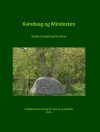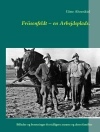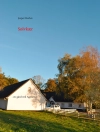This book explores how environmental urban design can benefit from established and emerging representation and simulation techniques that meet the need for a multisensory approach. Bringing together contributions by researchers and practicing professionals that approach the topics discussed from both theoretical and practical perspectives and draw on case-study applications, it addresses important themes including digital modeling, physical modeling, mapping, and simulation.
The chapters are linked by their relevance to simple but crucial questions: How can representational solutions enhance an urban design approach in which people’s well-being is considered the primary goal? How can one best represent and design the ambiance of places? What kinds of technologies and tools are available to support multisensory urban design? How can current and future environments be optimally represented and simulated, taking into account the way in which we experience places? Sheddingnew light on these key questions, the book offers both a reference guide for those engaged in applied research, and a toolkit for professionals and students.
Spis treści
1.Mapping urban environment by geometry(es) and perception(s).- 2.Experiential Simulation for Urban Design: from design thinking to final presentation.- 3.Visibility analysis for open spaces in urban areas. Coupling environmental quality and human comfort assessment.- 4.Experience the void in-between buildings. Towards ready to use visual-based software solutions aiming at representing the weight of hidden parts of the vista.- 5.Evolution of planning with visual conditions.- 6.The physical model for design project: a professional experience.- 7.Architectural Modeling in a Fab Lab.- 8.Mapping Venezia.- 9.Hear through the map. Reflections on the representation of the sonic environment by means of digital technologies.- 10.Simulation as an analytical and design tool.- 11.Outdoor Augmented Reality for Urban Design and Simulation.- 12.Luminous Planning Table: TUI as support for Education and Public Participation.- 13.Mobile devices and urban ambiances. How connected wearable tools changethe ways we perceive and design public spaces.












